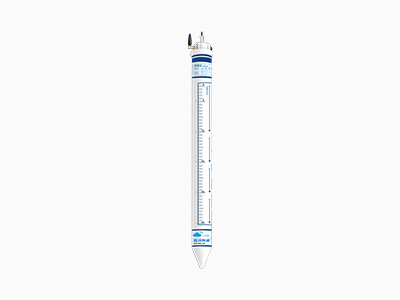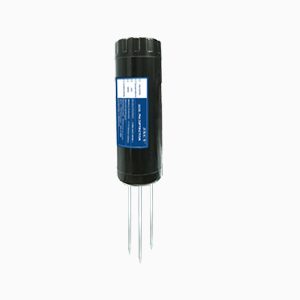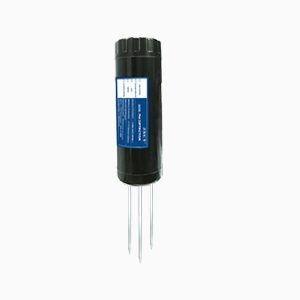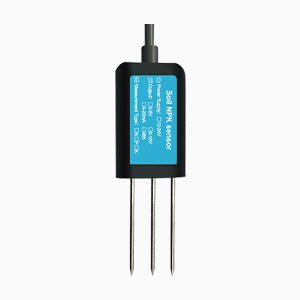Product Introduction:
Soil sensors are suitable for measuring soil temperature, moisture, total soil salinity (conductivity), soil PH, and NPK. The soil integrated sensor creatively measures the electrical conductivity, moisture, temperature, ph, nitrogen, phosphorus and potassium seven parameters together, which greatly facilitates the customer’s systematic assessment of the soil condition. Compared with the German original high-precision sensor and the actual soil drying and weighing method, the sensor has high accuracy, fast response and stable output. It is less affected by the soil salt content and is suitable for all kinds of soil. Tubular soil moisture monitor is a sensor developed by our company that can measure soil moisture changes at any point in the soil, and it is also a sensor based on the dielectric constant principle. It can monitor soil moisture in different soil layers quickly, accurately and comprehensively. Keeping crops in the best conditions for survival increases yields and greatly facilitates the client’s systematic assessment of soil conditions.
* Model: JXBS-3001-TDR-4G
* Minimum order quantity: 1 piece
* Delivery time: within 24 hours
Features:
1. Adopt high sensitive probe, fast response speed
2. Stable, reliable, accurate measurement
3. Small zero drift and good repeatability
4. Product protection grade IP67, temperature and humidity resistance
5. Product through a variety of environmental tests, anti-interference ability
6. View data on the remote cloud

Parameters:
Soil moisture measurement range: 0-100%RH
Soil salinity measurement range: 0-10000us/cm
Communication mode: RS485 (default), 4G, NB-IOT, or LoRa
Protection class: IP67
Operating humidity: 0 to 95% (relative humidity), no condensation
Power supply: 12-24V power supply
Measurement range: Temperature :-20 ~80℃; Humidity: 0-100%
Measurement principle: TDR
Appearance type: Tube type

Attention:
① The measuring instrument must be vertically inserted into the testing environment
② Do not overpress the device when it is embedded in the test environment
③ It is not suitable for the measurement of absolute moisture in saline-alkali land, sandy land, or other powdery objects with high salinity
Do not use it in soil impurities, stones, roots, and environments that are not easy to dissolve
⑤ The measuring instrument can not be completely buried in the soil, and the equipment is marked




FAQs:
How to select the installation location?
1. Install multi-depth soil sensors after planting crops
2. The installation position must be level
3. Under full irrigation, the area with less water is preferred as the monitoring position; under partial irrigation, the wet area is selected as the monitoring position
4. Choose a location that is balanced and representative of most crops
5. To understand the distribution of the root system of monitored crops, crop systems located close to water-absorbing roots are generally selected.
Note: The installation site of the equipment should be selected on high ground to prevent short circuit or line failure caused by rain flooding into the equipment.
Sand installation essentials
The sand installation is the same as the loam standard installation procedure. It should be noted that enough water must be prepared, no less than 5L. Before grouting, pour water into the hole and wet the entire wall until there is excess water at the bottom of the hole. Then follow the steps to slowly pour the mud into the hole, about halfway up the hole. Refer to the loam installation for the rest of the installation steps.
Clay mounting point
Installation of clay After collecting the soil by drilling holes and cleaning up the impurities, the clay is immersed in water for more than 4 hours to soften the clay and make it easier to live into a more uniform mud. After soaking, stir into a malignant shape and then grout. Refer to the loam installation for the rest of the installation steps.







Reviews
There are no reviews yet.